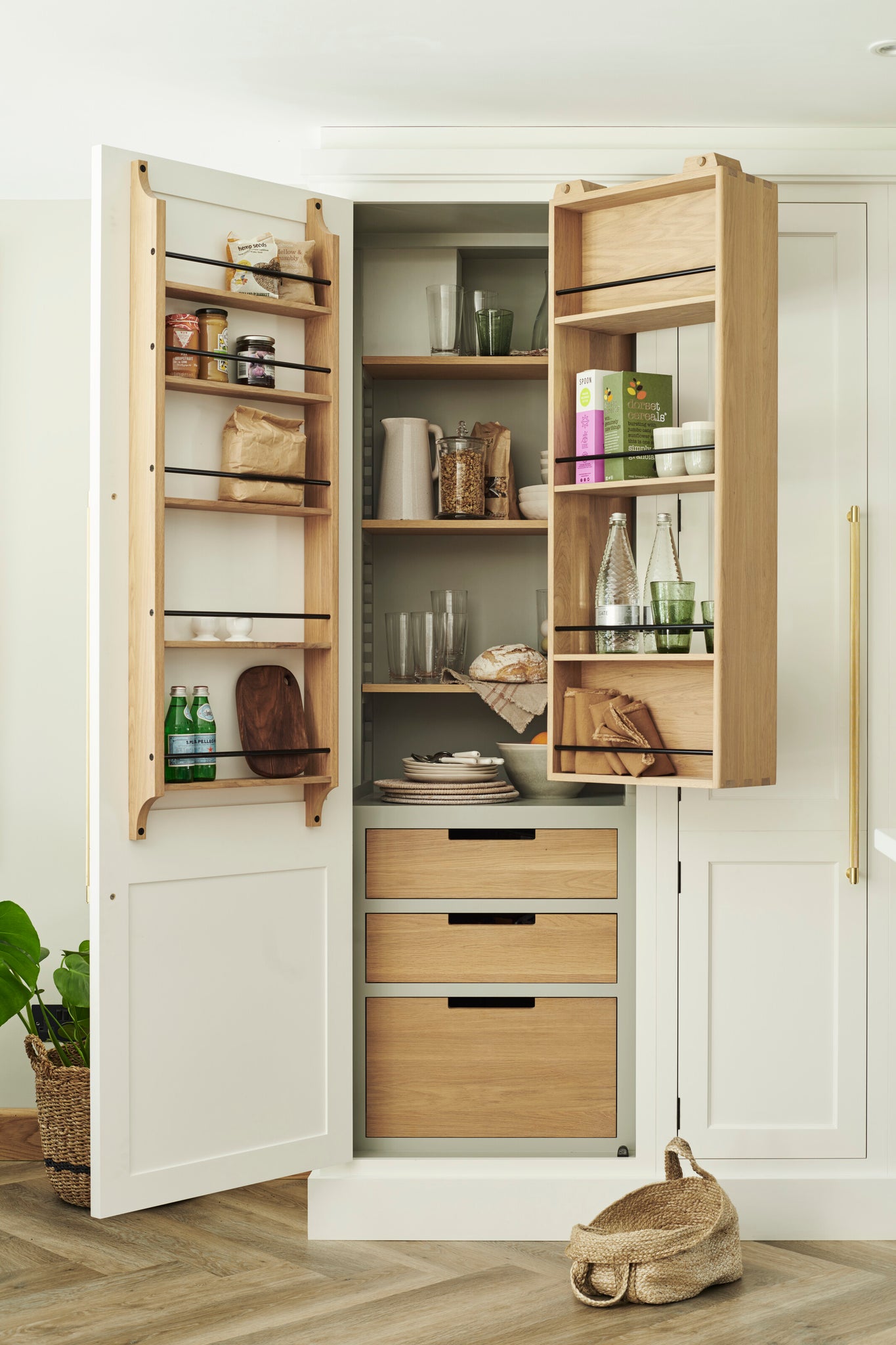There is a philosophy that runs through Neptune‚Äôs design and making processes that made introducing the new Lifetime Guarantee to our furniture collections possible. Co-founder John Sims-Hilditch sums it up best, ‚ÄòFrom the start, I felt that if we were going to make furniture that was going to last indefinitely, then we‚Äôd needed to make the right decisions around the materials, how they were designed, and how they were engineered and made. Our first decision was never to use MDF or chipboard because we could see they didn‚Äôt have the longevity that we would want.‚Ä�
The materials
Nearly thirty years on, this commitment to long lasting craftsmanship remains. Solid timber forms the heart of Neptune collections, from sofa structures to trestle tables. ‚ÄòOak has a long history in British furniture making,‚Ä� explains John, ‚Äòit is incredibly strong but also naturally beautiful.‚Ä� Teak is good for outdoor furniture thanks to its protective high oleo resin content, and tulipwood for painted pieces because it has a smooth surface that carries paint well. Birch plywood is used for inset panels on cabinetry as it gives doors a rigid dependability without being heavy. And even solid tables like the Arundel and Suffolk are designed with central panels of cross-bonded oak to create a super-strong structure that won‚Äôt warp over time. ‚ÄòNo one else uses this technique because it is hard to do, but it dramatically improves the life of the tables, so we believe it is worth it,‚Ä� explains John.


The design
With the materials set, the starting point for any Neptune design is to look to antiques ‚Ä� those very items that themselves have lasted for generations. Design lead Mike Charlton crafts mini balsa wood models that allow him to see his ideas in 3D. ‚ÄòThe models allow me to play with the shapes and joints and refine them easily,‚Ä� he explains. ‚ÄòA good model can tell you so much about a full-size piece of furniture, not only in its aesthetic but also in its strength and structure. If I designed the same piece of furniture on a computer, it would be more formulaic, designed the way that the computer has been programmed to work. There are no such restrictions when you use your own hands and physical timber.‚Ä�


The making
‚ÄòNo one is going to reinvent the dovetail joint because it‚Äôs a thing of beauty as well as a high functioning piece of design,‚Ä� says John, and most Neptune designs feature classic, trusted joinery that has been proved to stand the test of time. That said, modern technology is also integrated into the making process. ‚ÄòOur lives are spent researching and developing to understand new techniques,‚Ä� he adds, ‚Äòand when we come up with innovative ideas like the extending Moreton dining table which hides the extra surface leaves within a false drawer, it is a huge joy to us.‚Ä�
Wholly owning the making process means quality and details are a focus. ‚ÄòWe work closely with our highly skilled team at the Neptune factory in Qingdao,‚Ä� says Mike. ‚Ä�We have a good idea of how we would like the product to be made, however, we don‚Äôt have the day-to-day, hands-on experience of the workshop, so we work together to decide on the most appropriate joinery techniques and materials. We also visit the factory every few months to review samples and make any aesthetic improvements.‚Ä�
Our sofa collection is a case in point. All the frames are made of solid tulipwood and plywood, and the seat is built up with foam, webbing and Serpentine springs. But when it came to the cushion fillings, the design team were keen to offer an enhanced seating that balanced form and function. Some sofas have 100 per cent feather filled cushions but these require constant ‚Äòfluffing up‚Ä�. Working with the craftspeople at Neptune‚Äôs own factory, the team landed on the ‚Äòperfect balance‚Ä� of long-lasting fibre fill, wrapped up with the comfort and ‚Äòsink-in-ability‚Ä� of feathers. ‚ÄòHaving that direct relationship between design team and factory means the product is always the focus and we can revise it until we get it completely right,‚Ä� adds Mike.




























































 Layering patterns into any room will create a characterful space, but in a bedroom, it’s vital that the result is restful and harmonious, says interiors editor Lucy Searle.
Layering patterns into any room will create a characterful space, but in a bedroom, it’s vital that the result is restful and harmonious, says interiors editor Lucy Searle.




































